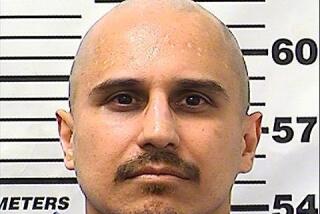George Zimmerman trial: Jury being asked to weigh inconsistencies
- Share via
Jurors in the George Zimmerman murder trial got to hear the neighborhood watch volunteer describe in his own voice the events that led to his being charged with second-degree murder in the shooting death of teenager Trayvon Martin.
Unfortunately, Zimmerman’s words in different statements to police were inconsistent at times -- discrepancies that the prosecution is hoping will help convince the six-person jury that Zimmerman profiled the teenager.
The defense, in its cross-examination of key police witnesses on Monday, got officials to agree that Zimmerman was being open and helpful with police and that the different versions could be expected from a person who had just gone through a traumatic event.
GRAPHIC: Who’s who in the Trayvon Martin case
Defense attorney Mark O’Mara asked lead police investigator Christopher F. Serino to evaluate Zimmerman on a scale ranging from pathological liar to generally telling the truth. The officer, who returns to the stand on Tuesday, agreed with telling the truth.
The level of inconsistency is something the jury will have to wrestle with as it weighs the charge against Zimmerman, stemming from a Feb. 26, 2012, confrontation with Martin at a gated community in Sanford, Fla. Zimmerman maintains he shot Martin in self-defense after the teenager attacked him.
The interviews were done by Sanford Police investigators Doris Singleton and Chris Serino in the hours and days after the shooting. Singleton conducted the first interview just after the shooting, and Serino led one just after midnight. Zimmerman gave a recorded guided tour of the scene on the following day.
PHOTOS: The Martin case in pictures
Some of the difference stick out. For example, in the video, Zimmerman said that after he called Sanford police to report Martin, a police dispatcher had asked him, “Can you get to somewhere where you can see him?”
That is not reflected in the recording of the call played in court. The dispatcher is heard in that call advising Zimmerman to stay away and let police handle the situation.
Investigators at various points ask why Zimmerman never explained to Martin why he was being followed, suggesting that the teenager might have had grounds to be fearful of being followed by a man.
“Do you think he was scared?” Serino asked at one point, challenging Zimmerman.
“Did you pursue this kid, did you want to catch him?” Serino asked.
“No,” Zimmerman said.
Perhaps the biggest inconsistency involves the level of injuries and Zimmerman’s statements.
Zimmerman told authorities that he lost track of Martin and got out of his truck to look for a street name he could relay to a police dispatcher. When the dispatcher suggested Zimmerman didn’t need to follow Martin, Zimmerman said, he started to head back to his vehicle. At that point, Zimmerman said, Martin jumped out and punched him, and he fell to the ground.
After a punch to the nose, “somehow he got on top of me. ... That’s when I started screaming for help,” Zimmerman said in the video.
Zimmerman said that Martin began hitting his head against the sidewalk. “You’re going to die tonight,” Zimmerman said Martin told him.
In some statements, Zimmerman said his head was battered many times, perhaps 25 or more, Serino said. But Zimmerman’s injuries, a bloody nose and two lacerations to the back of the head, are far less severe than what one would expect from such a beating.
Serino tells Zimmerman in the recorded interview that his injuries are “not quite consistent” with his story.
ALSO:
As Arizona wildfire raced toward town: ‘We’ve got to get out’
Las Vegas audience saw Cirque du Soleil performer’s fatal plunge
Battle of Gettysburg’s 150th anniversary has the town in high gear
More to Read
Sign up for Essential California
The most important California stories and recommendations in your inbox every morning.
You may occasionally receive promotional content from the Los Angeles Times.











